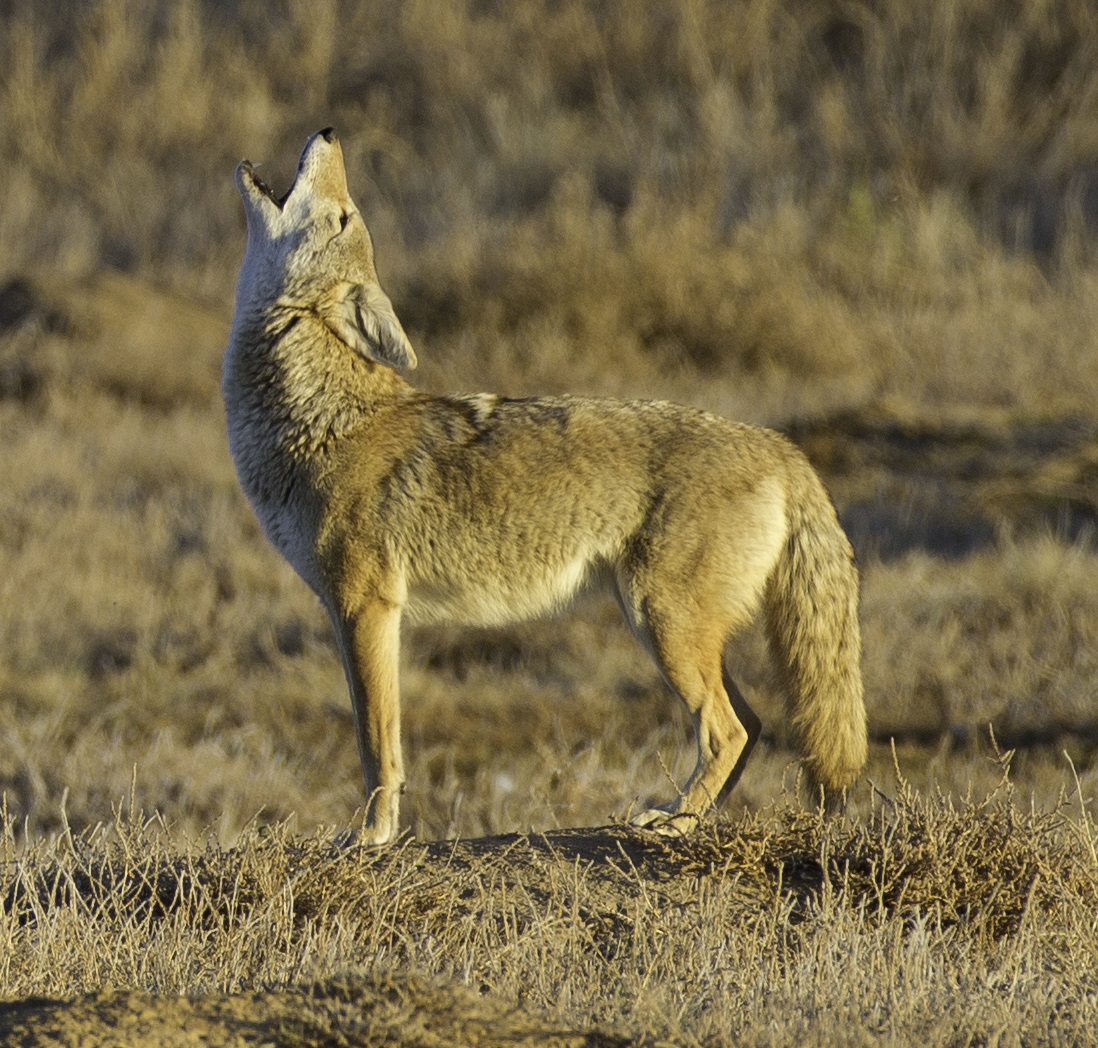
The world's first official zoological descripton of the coyote was given by Thomas Say, and in accord with the rules of taxonomy, the scientific name for the coyote is Canis latrans Say. In Latin, the genus-name "Canis" means "dog", and the species-name "latrans" means "barking."
In addition to an anatomical description, Say wrote in his journal, during the Long Expedition of 1819-20:
The prairie wolves [a common 19th-century name for coyotes] roam over the plains in considerable numbers, and during the night, the principal season of their hunts, they venture very near to the encampment of the traveller. They are by far the most numerous of our wolves, and often unite in packs for the purpose of chasing deer, which they very frequently succeed in running down, and killing. This, however, is an achievement attended with much difficulty to them, and in which the exertion of their utmost swiftness and cunning, are so often unavailing, that they are sometimes reduced to the necessity of eating wild plums, and other fruits, to them almost indigestible, in order to distend the stomach, and appease in a degree the cravings of hunger.
Their bark is much more distinctly like that of the domestic dog, than of any other animal; in fact the first two or three notes could not be distinguished from the bark of a small terrier, but these notes are succeeded by a lengthened scream.
The wonderful intelligence of this animal, is well worthy of note, and a few anecdotes respecting it may not be amiss. Mr. Peale [the artist in Long's expedition] constructed and tried various kinds of traps to take them, one of which was of the description called "a life trap," a shallow box reversed, and supported at one end, by the well known kind of trap sticks, usually called the "figure four," which elevated the front of the trap upwards of three feet above its slab flooring; the trap was about six feet long, and nearly the same in breadth and was plentifully baited with offal. Notwithstanding this arrangement, a wolf [i.e., "prairie wolf," a.k.a. "coyote"] actually burrowed under the flooring, and pulled down the bait through the crevices of the floor; tracks of different sizes were observed about the trap. This procedure would seem to be the result of a faculty beyond mere instinct.

Say continues his account by describing various more sophisticated traps, all of which the coyotes eluded. His complete account and much else by or about him is given in
Edwin James, Account of an Expedition from Pittsburgh to the Rocky Mountains, Performed in the Years 1819 and 1820, By Order of The Hon. J. C. Calhoun, Sec'y of War: Under the Command of Major Stephen H. Long, from the Notes of Major Long, Mr. T. Say, and Other Gentlemen of the Exploring Party, two volumes, Philadelphia, 1823. Reprinted in book form by University Microfilms, Inc., Ann Arbor. Say's description of the coyote is given in volume 1, Chapter 9.